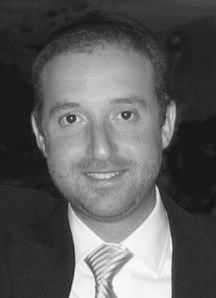 Before continuing the narrative of the Torah with Moshe Rabenu at the top of Har Sinai, the Torah in an almost “wait, we forgot to mention one last item” fashion, concludes with the instructions for the making of the “Mizbeah HaZahav” “the golden incense altar”.
Before continuing the narrative of the Torah with Moshe Rabenu at the top of Har Sinai, the Torah in an almost “wait, we forgot to mention one last item” fashion, concludes with the instructions for the making of the “Mizbeah HaZahav” “the golden incense altar”.Why now?
The Torah has previously discussed the utensils of the Mishkan in last week’s Parasha Teruma and this week’s Parasha Tetzaveh was the instructions for the clothing of those who held office in the Mishkan, the Kohanim.
A clue to answering this question can be found with the location of this altar.
The location of the golden incense altar is inside the inner section of the Mishkan opposite the “Evidence of the Torah”. The only other items in this room of the Mishkan are the Menorah and the Table with the loaves of bread. (As another point of reference, the main sacrificial altar for all the animals, the slaughtering, consumption, etc. is located outside of this section in the forecourt.)
 The Menorah, which always remains lit, represents the non-physical, a spiritual light. The table "Shulchan", with its loaves of bread, represents the material accomplishments of life. Each one of these symbols is also manifest in a human being. Visualize the face of a human being: The forehead, eyes, nose and mouth.
The Menorah, which always remains lit, represents the non-physical, a spiritual light. The table "Shulchan", with its loaves of bread, represents the material accomplishments of life. Each one of these symbols is also manifest in a human being. Visualize the face of a human being: The forehead, eyes, nose and mouth.
The forehead, which contains, protects and hides the brain, represents the Holy of Holies, containing the “Evidence of the Torah”, the inner intellectual rational thought. The eyes, which perceive light, a very non-physical action, represent the Menorah. The mouth, which is the gateway to ingestion, communication and physicality, represents the table with the loaves of bread. The nose, which perceives smell via chemicals in the air, while at the same time giving us the sense of taste, is a combination of the material and spiritual. (Remember if you have a cold, you can’t taste anything). The nose, which is situated in between the eyes and mouth, becomes a central figure of the face. This human attribute is representative of the golden incense altar which is also centrally located in the Mishkan.
The golden incense altar is the result of combining physicality, the table of the loaves of bread with, non-physicality, the light of the Menorah. It takes work to achieve this level of combining these two elements.
It takes work to achieve this level of combining these two elements.
Just before the Torah teaches us about the construction of the “Mizbeah HaZahav” “The golden altar”, the Torah says in Shemot 29:45, 46 “I shall rest My presence among the Children of Israel, and I shall be their God. They shall know that I am Hashem, their God, Who took them out of the land of Egypt to rest My Presence among them. I am Hashem, their God.”
The installation of the golden incense altar was always planned for the conclusion of the instructions for the consecration of the entire Mishkan and for after the assurance of Hashem’s providence once those instructions were carried out.
This golden altar is the ultimate achievement of balance of materialism and spirituality coupled with our constant awareness of Hahsem's precense in this world and in our lives. This is the sweet fragrant smell of the incense which permeates every space in the Mishkan.
Let us be more aware of these symbolic elements on Shabbat when we sit at the table gazing at the Shabbat candles and partaking of the Halot, but even more so when start our week after an amazing Shabbat and smell the Besamim of Havdala.
No comments:
Post a Comment